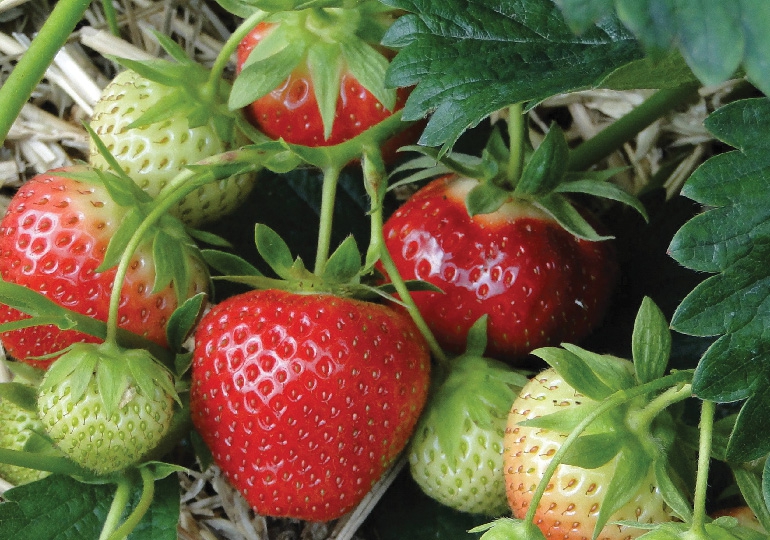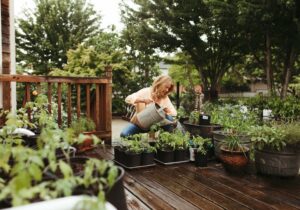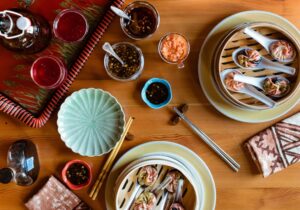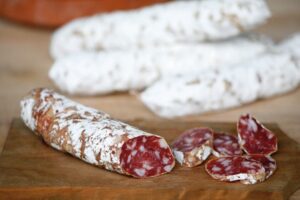© 2019 by Tara Austen Weaver. All rights reserved. Excerpted from Growing Berries and Fruit Trees in the Pacific Northwest by permission of Sasquatch Books.
A few years ago I met an out-of-town friend for a long weekend in Portland. It was early July, and that Saturday morning we wandered the farmers’ market and sampled what was on offer. When we got to the berries she stopped and turned to me. “Everything in the Northwest just tastes better,” she said. “It’s as if you can taste the rain.”
My friend is not wrong: the Pacific Northwest is an incredible climate for growing fruit. The damp winters and mild summers west of the Cascade Mountains are ideal for berries, while the sunshine found east of the mountains ripens acres of tree fruit. Whatcom County in Washington grows 85 percent of the US domestic red raspberry crop; Okanagan Country, which straddles the US–Canadian border, produces blueberries, peaches, and cherries; while Oregon is home to one of the largest collection of currants, gooseberries, and jostaberries in the world. The amount of fruit that comes out of the Pacific Northwest is impressive.
But commercial growers shouldn’t have all the fun. If you live in this region and have a small patch of land, you would do well to put in a berry bush or a fruit tree — even if you don’t consider yourself a gardener. You can grow some varieties in containers as well. Berries and fruit trees require far less maintenance than growing vegetables, and the payoff is tasty.
I got hooked on growing berries the first summer I spent in the Pacific Northwest; I didn’t even live here at the time. I was in Seattle just for a few months, staying in a borrowed house, when I saw raspberry canes being sold at the farmers’ market. The delicate serrated leaves brought back childhood memories of my mother’s garden and the delight of popping a red, thimble-shaped berry into my mouth. I have two nieces, who were both very young at the time, and I wanted them to have this same experience.
So I bought two pots and planted them alongside the house I was staying in. When they yielded a small handful of fruit, my 3-year-old niece gobbled them up and smiled at me with raspberry-stained lips. In that moment I was hooked. By the end of the summer I had purchased two blueberry bushes and was propagating strawberries as well. In terms of reward-to-effort ratio, berries are fairly low maintenance and the yield is bountiful and sweet.
My introduction to fruit trees came a few years later, when my family bought a house in Seattle with a large garden that had been neglected for more than a decade. After the weeds had been cleared, we discovered nine mature apple and pear trees that had been cloaked in blackberry vines and bindweed. We’ve since added fourteen more — cherries, peaches, plums, and a quince tree. Now summers are filled with berries and autumns are filled with baskets of fruit. We do a lot of preserving as well — canning, drying, and freezing — to enjoy the fruit year-round.
I’ve learned that fruit trees are, in some ways, even easier to maintain than berries. Unlike vegetable gardens that need to be weeded and watered, fruit trees spend a lot of time taking care of themselves, with the occasional check-in and seasonal maintenance. The reward is buckets of fruit, more than enough to share.
I still grow vegetables in my garden, but over the years I’ve edited down the list of what I’m willing to grow — only solid producers I can rely on. I keep adding berries and fruit trees, however. Those first raspberries I bought still flourish in my current garden, along with three other varieties; I have twelve blueberry bushes, three elderberries, and twenty-three fruit trees. That’s probably more than most people want to take on, but anyone with a sunny patch of yard can enjoy growing their own fruit.
And here is the really astounding thing: if I were to walk away tomorrow, all those fruit trees and berry bushes would survive without me. They might not do as well, and they would eventually need to be pruned, but fruit is resilient. Barring catastrophe or construction, my berries and orchard will outlive me. Think of those pioneer-era farmhouses you can see throughout our region whose apple trees still yield fruit each fall, more than 100 years later.
Perhaps that is the final bit of pleasure in growing fruit. Beyond the berries picked still warm from the sun and the joy of tasting your first sweet cherry, you’re planting something that will endure — perhaps for generations — and continue to produce far into the future. When it comes to berries and fruit trees, you’re not just planting a garden, you’re planting a legacy.
It’s a delicious legacy, one that will provide pleasure and fill bellies and larders for years to come.
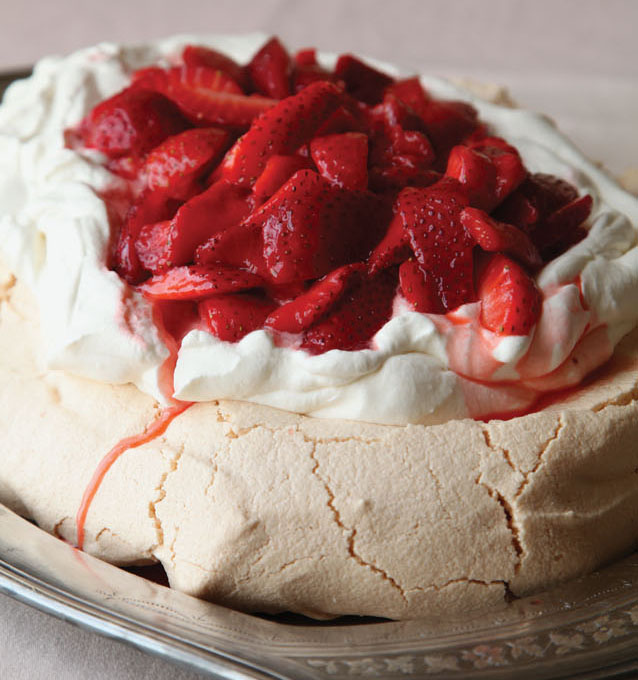
Recipe: Fancy Summer Pavlova
Sometimes you want a showstopper of a dessert — something that elicits gasps of delight when you carry it to the table. As far as summer fruit desserts go, pavlova is exactly that — an airy meringue piled high with whipped cream and topped with juicy fruit whose syrup runs down into the cream and softens the meringue. This dish can be used as a blank canvas for almost any fruit: strawberries are traditional, cherries (roasted or raw) are delicious, sliced stone fruit is an excellent pairing, or you can use any mixture of the above.
Makes 8 to 10 servings:
- 4 cups bite-size pieces of fruit
- 1⁄2 cup granulated sugar
- 2 tbsp. freshly squeezed lemon juice
- 4 egg whites, at room temperature
- 1⁄8 tsp. fine sea salt
- 1 1⁄4 cups baker’s or super fine sugar
- 2 tsp. cornstarch
- 1 tsp. distilled vinegar
- 1⁄2 tsp. vanilla extract
- 1 pint heavy cream
1. In a medium bowl, combine the fruit, sugar, and lemon juice and set aside to macerate for at least 6 hours, or overnight in the refrigerator.
2. Preheat the oven to 350 degrees F. Line a baking sheet with parchment paper and draw a 12-inch circle in the center of the paper. Turn the paper over on the baking sheet and set aside.
3. Make sure your hands and all utensils are clean-grease of any kind can prevent the egg whites from whipping properly. Measure out all the meringue ingredients so they are ready to assemble.
4. In a medium mixing bowl, whip the egg whites and salt until stiff peaks form (you should be able to turn the bowl upside down and the whites will stay intact). Beat in the sugar, 1 tablespoon at a time, until the meringue is stiff and shiny, 5 to 7 minutes. Sprinkle the cornstarch, vinegar, and vanilla over the egg whites and gently fold in.
5. Spoon the meringue onto the circle on the parchment paper and smooth the top and sides into a nest shape with walls slightly higher than the middle. Place on a center rack in the oven and immediately reduce the heat to 300 degrees F. Cook for 1 1/4 hours, then turn off the oven, prop the door open, and leave the meringue in the oven to cool completely (this can be done overnight). The finished product will be slightly off-white, with a crisp outer shell and a marshmallow interior; don’t worry if there are cracks.
6. When the meringue has cooled, carefully peel off the parchment paper and discard. Place the meringue on a serving dish.
7. Whip the cream until gently stiff, then pile it on top of the meringue, smoothing evenly. Spoon the macerated fruit over the cream. The meringue will start to soften as soon as you’ve added the top- pings, so assemble as close to serving as possible. Leftovers can be stored in the refrigerator for a day or two.
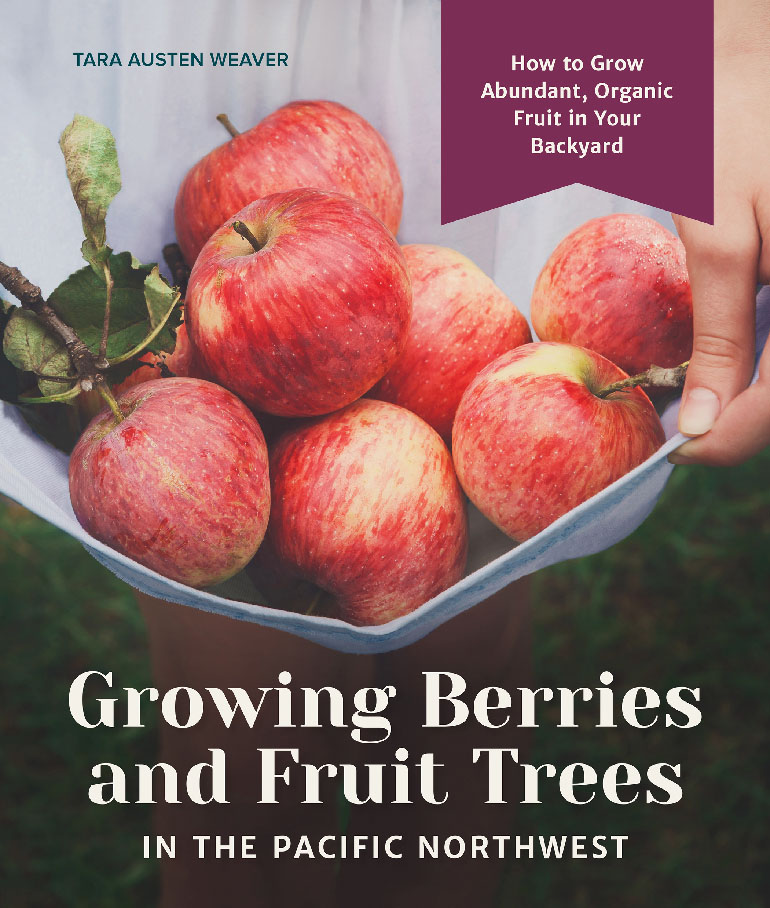
Tara Austen Weaver is a trained Master Gardener and author of The Butcher and the Vegetarian and Orchard House: How a Neglected Garden Taught One Family to Grow, which chronicles how she and her family attempted to revive a long-neglected Seattle garden and orchard. Her food blog, Tea & Cookies, was selected as one of the top 50 food sites in the world by both the Times of London and The Independent (U.K.) and has been featured on Saveur, Oprah.com, Apartment Therapy, The Kitchn and BonAppetit.com.



